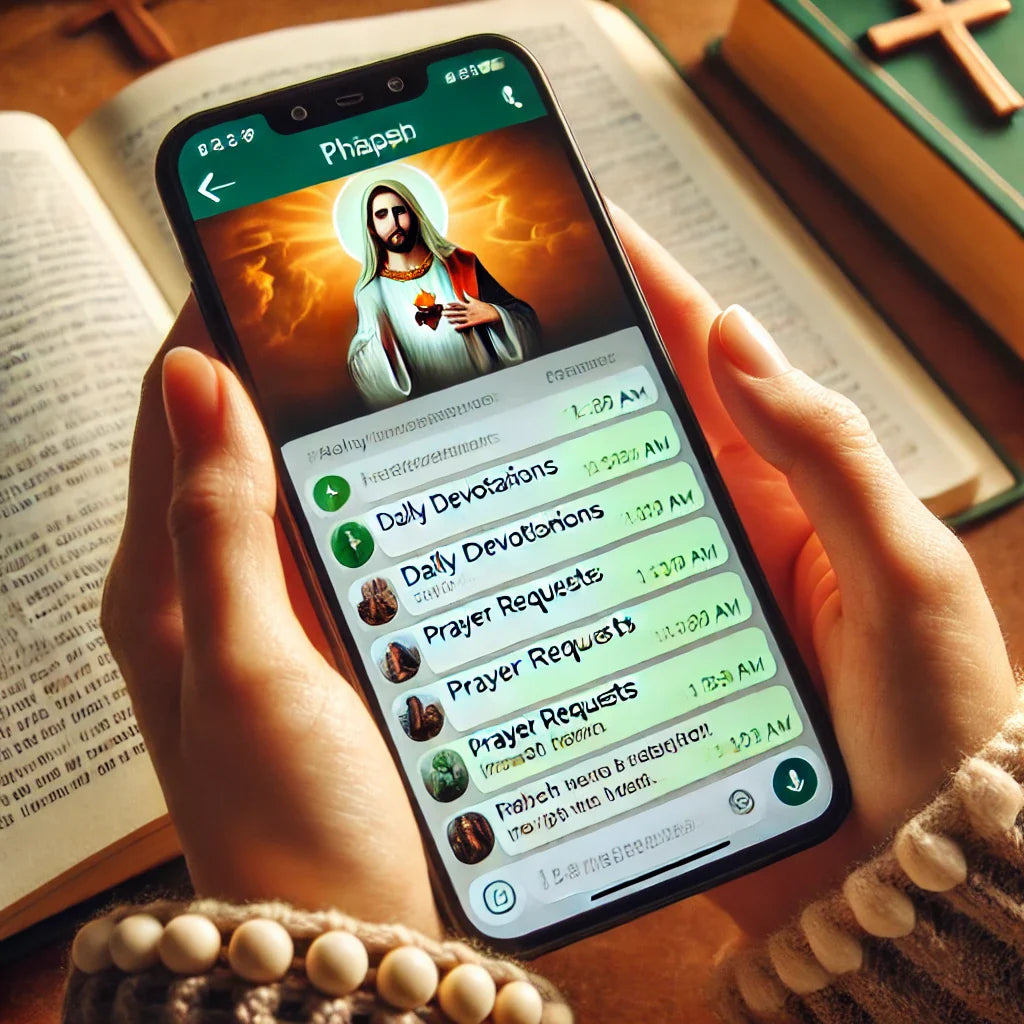
The Role of WhatsApp in Faith Sharing
|
|
Time to read 4 min
|
|
Time to read 4 min
The digital age has revolutionized how people connect with their faith, making it easier for parishes to reach those who cannot attend in-person services. Livestreaming Mass and online events have become essential tools for engaging the homebound, diaspora communities, and those who want to stay connected to their church. While technology makes this possible, it is crucial to maintain reverence and ensure a smooth experience for online worshippers.
This guide will walk you through the technical aspects of livestreaming, discuss best practices for maintaining the sanctity of online worship, and provide strategies for maximizing engagement and outreach.
Many parishioners face challenges in attending Mass physically due to age, illness, disability, or travel restrictions. Livestreaming allows them to participate in the Eucharist and other religious events from their homes.
For Catholics living abroad, staying connected to their home parish provides comfort and a sense of belonging. Livestreaming helps diaspora communities maintain spiritual ties with their roots.
Online worship enables parishes to spread the message of Christ to a wider audience, including non-Catholics curious about the faith.
Livestreaming enables real-time interaction, allowing parishioners to engage with one another even when physically distant. It also fosters a sense of belonging, encouraging participation in parish events.
Basic Option: Smartphone with a stable tripod and good lighting.
Mid-Range Option: Webcam (e.g., Logitech C920) with an external microphone.
Professional Option: DSLR or camcorder (e.g., Canon EOS M50, Sony A6400) with a capture card.
Lavalier Microphone (clip-on mic for priests and readers).
Shotgun Microphone (directional mic for picking up altar sounds).
Wireless Microphone System for mobility.
Mixer for balancing multiple audio sources.
Free Options: OBS Studio, StreamYard.
Paid Options: Ecamm Live (Mac), vMix (Windows).
Minimum Upload Speed: 5 Mbps for standard quality, 10 Mbps for HD streaming.
Wired Connection: Use Ethernet instead of Wi-Fi for a stable stream.
Natural Light: Position the altar and speakers in well-lit areas.
Ring Light/Softbox: Enhances video quality for indoor services.
Tripod with Phone Mount: Essential for steady footage.
Gimbal Stabilizer: Useful for processions and dynamic shots.
720p (HD): Good balance between quality and data usage.
1080p (Full HD): Best for professional streams but requires higher bandwidth.
4K (Ultra HD): Not recommended unless you have top-tier equipment and internet speed.
Facebook Live: Popular and easy to access.
YouTube Live: Ideal for long-term storage and accessibility.
Zoom/WebEx: Suitable for interactive prayer meetings.
Church Website Embed: For a dedicated audience.
Install OBS Studio (or other software).
Connect your camera and audio devices.
Set up a scene layout with church branding, scripture overlays, and event details.
Run a test stream to ensure quality.
Remove unnecessary distractions from the background.
Adjust the camera angle for a reverent and immersive view.
Ensure proper microphone placement to capture clear sound.
Begin with a countdown screen to alert viewers.
Assign a moderator to monitor live comments.
Have backup internet and power options in case of failure.
Provide instructions on how viewers can send prayer intentions.
Use polls or comments to engage attendees.
Offer a short reflection or Q&A session after the service.
Avoid excessive camera movements.
Keep the focus on the altar and liturgical actions.
Ensure appropriate attire for those involved in the service.
Encourage viewers to prepare a quiet, prayerful space at home.
Offer a spiritual communion prayer for those unable to receive the Eucharist physically.
Encourage participation in responses and hymns.
Avoid adding distracting overlays or pop-ups during consecration.
Ensure reverent handling of the Eucharist is clearly visible.
Train volunteers on the sacred nature of live-streamed worship.
Announce livestream details in advance via WhatsApp, Facebook, and parish bulletins.
Use email newsletters to remind parishioners.
Create engaging promotional graphics with service times.
Include interactive elements such as live prayer requests.
Ask viewers to comment where they’re joining from.
Have a post-Mass Q&A session with the priest.
Upload recorded services for later viewing.
Create short clips of homilies and reflections for social media.
Gather feedback from viewers for future improvements.
Display a link to parish donation pages.
Offer multiple online giving options such as UPI, PayPal, or direct transfers.
Remind viewers how their contributions support the church’s mission.
Have a dedicated team to troubleshoot issues.
Keep backup devices ready.
Test audio and video before every Mass.
Encourage active participation through chats and polls.
Reach out to younger parishioners to help promote.
Partner with Catholic influencers to boost visibility.
Livestreaming Mass and online events are more than just technological advancements—they are vital tools for keeping faith accessible and engaging for all believers. With proper planning, high-quality equipment, and a focus on reverence, parishes can create meaningful digital worship experiences. By embracing best practices and continuously improving their approach, churches can bridge the gap between physical and virtual congregations, ensuring that no one is left out of their spiritual community.
Now is the time for parishes to step into the digital realm with confidence, bringing the Word of God to more people than ever before. Let your church be a beacon of light in the online world!